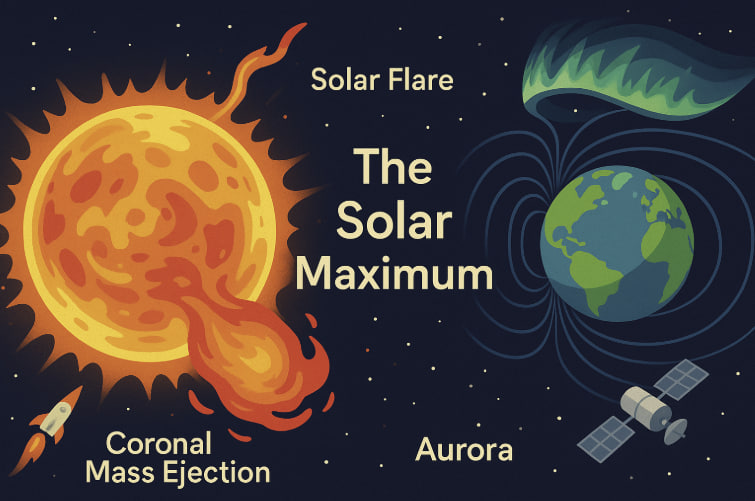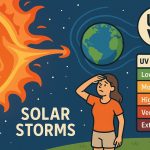Every 11 years, our Sun enters a period of heightened activity known as the solar maximum. During this time, the Sun becomes more restless, producing more sunspots, solar flares, and coronal mass ejections (CMEs). These events can have profound effects not just on the space environment but also on Earth’s technology and even climate. As we approach the next solar peak, understanding what it means—and what it could do—is more important than ever.
What Is the Solar Maximum?
The solar maximum is the most active phase of the solar cycle, an approximately 11-year period in which the Sun’s magnetic field flips and resets. The cycle is tracked by counting sunspots—dark, cooler areas on the Sun’s surface that are indicators of magnetic turbulence.
- Solar minimum = few sunspots, low solar activity
- Solar maximum = many sunspots, high solar activity
During the peak, the Sun’s magnetic field is at its most chaotic, leading to increased solar eruptions and energetic radiation.
What Happens During a Solar Maximum?
1. More Solar Flares and CMEs
- Solar flares: sudden explosions of energy that emit X-rays and UV radiation.
- CMEs: massive clouds of plasma and magnetic fields hurled into space at millions of kilometers per hour.
These events can reach Earth and disrupt communication systems, satellites, and power grids.
2. Stronger Auroras
- More charged particles interact with Earth’s magnetosphere, creating brighter and more frequent auroras—visible further from the poles than usual.
3. Impact on Space Travel
- Astronauts are at higher risk of radiation exposure during spacewalks or deep space missions.
- Spacecraft must be better shielded to survive intense bursts of solar radiation.
4. Satellite and GPS Disruption
- Satellites in low Earth orbit may experience drag increase due to atmospheric expansion.
- GPS signals can be degraded or jammed during solar storms, affecting navigation and timing systems.
5. Radio Blackouts and Aviation Risks
- Shortwave radio communication can fail.
- Polar flight paths may be rerouted due to increased radiation levels.
Does Solar Maximum Affect Earth’s Climate?
While the Sun’s energy output does vary slightly during the solar cycle, solar maximums are not strong enough to cause major climate shifts on their own. However, prolonged periods of high or low solar activity (like the Maunder Minimum) have historically coincided with modest temperature changes.
How Do Scientists Predict Solar Maximum?
NASA and NOAA use a combination of:
- Sunspot monitoring
- Solar magnetic field models
- Solar wind and X-ray measurements
The current solar cycle (Cycle 25) began in 2019 and is expected to reach its peak around 2025. Early observations suggest it may be more active than initially predicted.
Glossary
- Sunspot – A dark region on the Sun’s surface caused by magnetic activity.
- Solar flare – A sudden burst of electromagnetic radiation from the Sun.
- Coronal Mass Ejection (CME) – A massive eruption of plasma and magnetic field from the Sun.
- Aurora – A natural light display caused by charged particles colliding with Earth’s atmosphere.
Conclusion
The solar maximum is a spectacular and powerful phase in our Sun’s natural cycle. While it brings beauty to our skies through stunning auroras, it also presents risks to satellites, communication systems, and even astronauts. By monitoring the Sun’s activity and preparing for potential disruptions, we can better protect our technology—and take full advantage of the awe-inspiring science unfolding above our heads.


